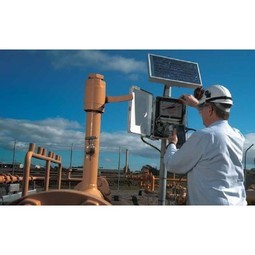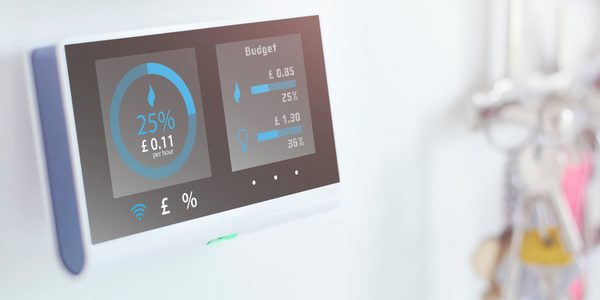Arkansas Electric Cooperative Corporation Deploys Cireson to Enhance Usability of Service Manager
Customer Company Size
Mid-size Company
Region
- America
Country
- United States
Product
- Cireson Portal
- Self-Service Portal
- Outlook Console
Tech Stack
- Microsoft Outlook
- System Center Service Manager
Implementation Scale
- Enterprise-wide Deployment
Impact Metrics
- Cost Savings
- Productivity Improvements
- Customer Satisfaction
Technology Category
- Functional Applications - Enterprise Resource Planning Systems (ERP)
- Functional Applications - Remote Monitoring & Control Systems
Applicable Industries
- Utilities
Applicable Functions
- Business Operation
- Facility Management
Use Cases
- Remote Asset Management
- Remote Control
Services
- System Integration
- Software Design & Engineering Services
About The Customer
Founded in 1949, Arkansas Electric Cooperative Corporation (AECC) is a member of Electric Cooperatives of Arkansas. AECC generates and supplies wholesale electricity to 17 distribution cooperatives. Together, they provide power to over 500,000 homes, farms, and businesses in over 60% of Arkansas. AECC generates electricity in a number of natural gas and oil plants, coal-based plants, and hydroelectric generating stations. The company employs around 450 people and is based in the United States.
The Challenge
For years, AECC did not have a formal help desk solution. The users would call in or email with questions or service requests to get help from the IT department. With every request being processed manually, it was a very inefficient system, resulting in long wait times for the end users. AECC took steps to resolve this issue and selected their first help desk solution, System Center Service Manager was originally deployed a year prior. For the first year, the IT team worked with the platform exclusively, with no add-on solution to simplify the daily management process. While using Service Manager, they realized the need for a more user-friendly, intuitive interface to help workers manage everyday tasks, while retaining the agile backend automation capabilities. After conducting significant research into their options, the AECC team selected Cireson to help resolve their pressing Service Manager needs.
The Solution
AECC chose to deploy Cireson’s Business Management Solution. Through Cireson’s intuitive technology, the IT department ended up doing all the work in house while deploying the apps. The work was completed in a timely manner, with full support and guidance from the Cireson team. The Cireson Portal currently stands out as the most game-changing implementation for AECC. As one of the first solutions deployed, it created a great starting point for the adoption of the entire Cireson Platform. By seamlessly integrating with Service Manager, the solution provides users with the flexibility to manage their daily activities from anywhere, not just their workstation. With the help of the Portal, incidents became much easier to create, as well as transfer between departments. Another time-saving app used extensively by AECC is the Self-Service Portal. Enabling end users to not only report issues, but also access the knowledge base to find help with common problems, the app allows users to track the progress of the submitted claims, as well as resolve simple issues autonomously. It keeps both the end users and the IT department automatically updated on the status of each claim. The Outlook Console has also helped boost the department’s productivity, while simplifying daily interactions with Service Manager. Enabling the AECC IT users to manage their daily tasks and activities from Microsoft Outlook, it further cut down on the time spent accessing various databases and apps from multiple screens. For AECC, the Cireson Platform was instrumental in providing the IT team with the right tools to do their job easily and quickly, using automated features that not only speed up the resolution process, but also eliminate a significant number of human errors.
Operational Impact
Quantitative Benefit

Case Study missing?
Start adding your own!
Register with your work email and create a new case study profile for your business.
Related Case Studies.

Case Study
IoT Solutions for Smart City | Internet of Things Case Study
There were several challenges faced: It is challenging to build an appliance that can withstand a wide range of voltage fluctuations from as low at 90v to as high as 320v. Since the device would be installed in remote locations, its resilience was of paramount importance. The device would have to deal with poor network coverage and have the ability to store and re-transmit data if networks were not available, which is often the case in rural India. The device could store up to 30 days of data.

Case Study
Automation of the Oguz-Gabala-Baku water pipeline, Azerbaijan
The Oguz-Gabala-Baku water pipeline project dates back to plans from the 1970’s. Baku’s growth was historically driven by the booming oil industry and required the import of drinking water from outside of the city. Before the construction of the pipeline, some 60 percent of the city’s households received water for only a few hours daily. After completion of the project, 75 percent of the two million Baku residents are now served around the clock with potable water, based on World Health Organization (WHO) standards. The 262-kilometer pipeline requires no pumping station, but uses the altitude differences between the Caucasian mountains and the capital to supply 432,000 m³/d to the Ceyranbatan water reservoir. To the people of Baku, the pipeline is “the most important project not only in 2010, but of the last 20 years.”

Case Study
GPRS Mobile Network for Smart Metering
Around the world, the electricity supply industry is turning to ‘smart’ meters to lower costs, reduce emissions and improve the management of customer supplies. Smart meters collect detailed consumption information and using this feedback consumers can better understand their energy usage which in turn enables them to modify their consumption to save money and help to cut carbon emissions. A smart meter can be defined in many ways, but generally includes an element of two-way communication between the household meter and the utility provider to efficiently collect detailed energy usage data. Some implementations include consumer feedback beyond the energy bill to include online web data, SMS text messages or an information display in consumers’ premises. Providing a cost-effective, reliable communications mechanism is one of the most challenging aspects of a smart meter implementation. In New Zealand, the utilities have embraced smart metering and designed cost effective ways for it to be implemented. The New Zealand government has encouraged such a move to smart metering by ensuring the energy legislation is consistent with the delivery of benefits to the consumer while allowing innovation in this area. On the ground, AMS is a leader in the deployment of smart metering and associated services. Several of New Zealand’s energy retailers were looking for smart metering services for their residential and small business customers which will eventually account for over 500,000 meters when the multi-year national deployment program is concluded. To respond to these requirements, AMS needed to put together a solution that included data communications between each meter and the central data collection point and the solution proposed by Vodafone satisfied that requirement.

Case Study
NB-IoT connected smart meters to improve gas metering in Shenzhen
Shenzhen Gas has a large fleet of existing gas meters, which are installed in a variety of hard to reach locations, such as indoors and underground, meaning that existing communications networks have struggled to maintain connectivity with all meters. The meter success rate is low, data transmissions are so far unstable and power consumption is too high. Against this background, Shenzhen Gas, China Telecom, Huawei, and Goldcard have jointly trialed NB-IoT gas meters to try and solve some of the challenges that the industry faces with today’s smart gas meters.

Case Study
British Gas Modernizes its Operations with Innovative Smart Metering Deployment
The UK government has mandated that smart meters are rolled out as standard across Great Britain by end of 2020, and this roll-out is estimated to create £14 billion in net benefits to the UK in consumer energy savings and lower energy generation demand, according to the Oxford Economics report, “The Value of Smart Metering to Great Britain.” While smart-metering systems have been deployed in many countries, the roll-out in Great Britain is unique because it is led by energy retailers, who have responsibility for the Electricity and Gas meters. The decision to have a retailer-led roll out was made by DECC (Department of Energy and Climate Change) to improve customer experience and drive consumer benefits. It has also led to some unique system-level requirements to support the unique local regulatory model.

Case Study
OneWireless Enabled Performance Guarantee Test
Tata Power's power generation equipment OEMs (M/s BHEL) is required to provide all of the instrumentation and measurement devices for conducting performance guarantee and performance evaluation tests. M/s BHEL faced a number of specific challenges in conducting PG tests: employing high-accuracy digital communications for instrumentation, shortening setup and dismantling time, reducing hardware required, making portable instrument setup, avoiding temporary cabling work and the material waste costs






